Ask students, in the following, to apply the c<strong>on</strong>cept of resistance to ableism: how have peopleliving with disabilities resisted ableism?a. Pers<strong>on</strong>al resistance dyadForm dyads. Have students take turns recalling the pers<strong>on</strong>al experience of having a disability orwitnessing some<strong>on</strong>e who was disabled that they came up with in sessi<strong>on</strong> 2. In the dyad (<strong>on</strong>eminute each way), have each student brainstorm as many ways as she/he can remember that thepers<strong>on</strong> with the disability (whether her/himself or some<strong>on</strong>e she/he witnessed) resisted beingstereotyped or stigmatized as disabled. Remind them that this is not about resisting beingdisabled, or coping with it “heroically,” but rather resisting the oppressi<strong>on</strong> of ableism⎯thestigma that might attach to having a disability.Finish the dyad, and have students call out as many forms of resistance as they can.b. The movementsExplain that bey<strong>on</strong>d pers<strong>on</strong>al resistance, there has been l<strong>on</strong>gstanding organizing by disabledactivists against ableism, the latest within the last 20 years. Have students volunteer anyinformati<strong>on</strong> or knowledge they have about these movements, and add in the following:Disability Resistance Movements• Patients’ rights: organizing am<strong>on</strong>g disabled recipients of medical care for informed c<strong>on</strong>sentfor medical treatment, against forced incarcerati<strong>on</strong> or medicati<strong>on</strong> for people with mentaldisabilities, &c.• Organized communities: advocacy groups organized by and <strong>on</strong> behalf of particularc<strong>on</strong>stituencies: the Blind community, the Deaf community and others.• Independent living movement: organizing to enable disabled adults live independently ofinstituti<strong>on</strong>s, establishing and maintaining households and employment• Disability rights movement: activists organized to change existing laws and create newlegislati<strong>on</strong> ensuring public access and accommodati<strong>on</strong>s for all disabled people, and schoolsand workplaces that integrate abled and disabled people (“mainstreaming” people withdisabilities)• Cultural access: people with disabilities organizing their participati<strong>on</strong> in sports (specialOlympics), arts (Access Theater for actors with and without wheelchairs, Nati<strong>on</strong>al Theaterfor the Deaf, &c) and other arenasExplain that students are about to do a roleplay c<strong>on</strong>fr<strong>on</strong>ting ableism. Point out that it will beparticularly important, whether in the roleplay or in further activities, to keep in mind howpeople with disabilities resist, because:• disabled resistance is often “invisiblized” (because disabled people themselves arelargely kept invisible in mainstream culture), and• ableism works by assuming that disabled people are helpless and need to be“helped”⎯whether they ask for help or not; so well-intenti<strong>on</strong>ed allies may take over,<strong>on</strong>ce again taking power away from the targeted group.3. “You Poor Thing” 10 minutes<str<strong>on</strong>g>Unit</str<strong>on</strong>g> <strong>on</strong> <strong>Ableism</strong>18
Have three students who have previously volunteered and been prepared for this roleplay taketheir places in fr<strong>on</strong>t of the class. Bring <strong>on</strong>e chair to the fr<strong>on</strong>t of the room. One student sits in thechair, while the others face her/him. All three are same-age students. The chair is a wheelchair;the pers<strong>on</strong> in the chair⎯the first patr<strong>on</strong>⎯is paraplegic, and the scene is in the first-floor lobby ofa movie theater. One of the other students plays a sec<strong>on</strong>d patr<strong>on</strong> who is not paraplegic; <strong>on</strong>e playsthe (student-age) assistant theater manager. (Remember that if real-life wheel-chaired studentsvolunteer to participate, they have the opti<strong>on</strong> of playing any of the three roles.)ScenarioIn the following scene, the sec<strong>on</strong>d patr<strong>on</strong> plays the part of some<strong>on</strong>e who wants to help, buther/his chief feeling about the chaired pers<strong>on</strong> is pity: “it’s so sad that you have this handicap.”The chaired patr<strong>on</strong> has bought a ticket to see a film <strong>on</strong> the sec<strong>on</strong>d floor, but the <strong>on</strong>ly access is bystairs (the elevator is broken, as it often is at this theater). This has happened before, and thistime she/he refuses to leave until something is d<strong>on</strong>e about the elevator. The manager plays anoverworked, embarrassed employee who is trying to talk the chaired pers<strong>on</strong> into leaving. She/hemight offer to have the chaired pers<strong>on</strong> taken out of her/his chair and carried up to the theater byother employees (the other patr<strong>on</strong> might offer to help do this); she/he might argue that it coststoo much to fix the elevator; or might end up angry at the chaired pers<strong>on</strong> for complaining toomuch, making things too inc<strong>on</strong>venient. The chaired pers<strong>on</strong> refuses to be lifted out of her/hischair, and holds to the principle that the theater is resp<strong>on</strong>sible for making movies “accessible” toevery<strong>on</strong>e.Invite students to play out the roleplay with the above directi<strong>on</strong>s for 2-3 minutes. Encourage thestudents enacting the sec<strong>on</strong>d patr<strong>on</strong> and the theater manager play their character parts fully,saying all the “wr<strong>on</strong>g” things.Freeze the roleplay. Have the actors take turns talking about how it felt to be in their roles,beginning with the chaired pers<strong>on</strong>. Then have other students report what they observed. Ask thefollowing, based <strong>on</strong> this roleplay:• How was the chaired pers<strong>on</strong> mistreated?• How did the chaired pers<strong>on</strong> resist mistreatment?• Does the pers<strong>on</strong> in the chair need assistance in this situati<strong>on</strong>?• What kinds of assistance were not helpful? Why?• What could a chaired pers<strong>on</strong> do to change this situati<strong>on</strong>? What could an ally do?Finish by having students applaud the actors.4. Access 25 minutesExplain that, like anti-sexism, anti-racism and anti-heterosexism movements, a powerfulresistance movement for disability rights, led by people with disabilities, has happened in thelast two-three decades in the <str<strong>on</strong>g>Unit</str<strong>on</strong>g>ed States. One of the most important things disability activistshave fought for is access, the right for people with disabilities to be enabled to participate in allareas of civic life that abled people do. Activists have c<strong>on</strong>tinually shown that “pity,” denial andminimizati<strong>on</strong> of the problem, or complaints that changes “cost too much,” are themselves part ofthe oppressi<strong>on</strong> of ableism.<str<strong>on</strong>g>Unit</str<strong>on</strong>g> <strong>on</strong> <strong>Ableism</strong>19


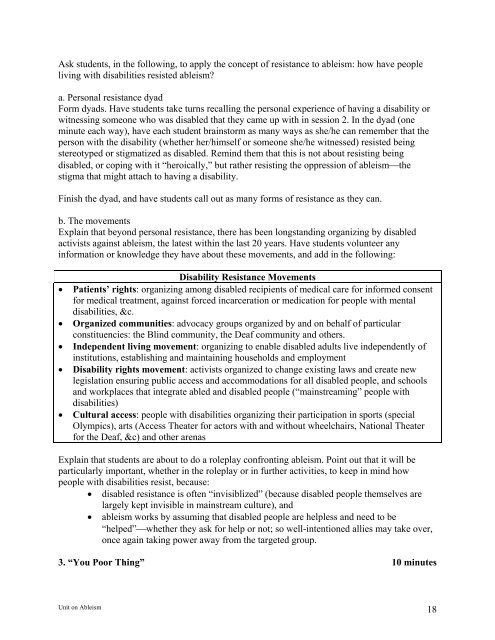
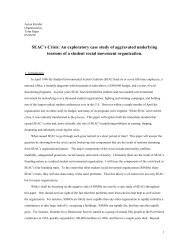

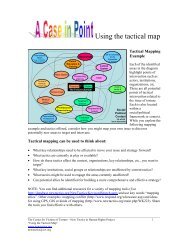
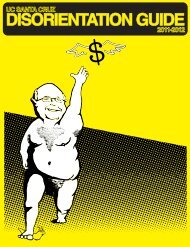

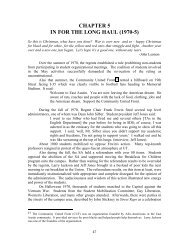
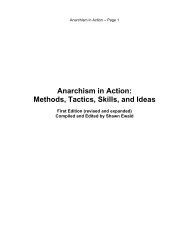

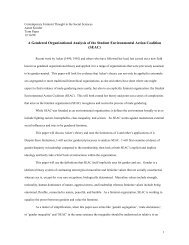


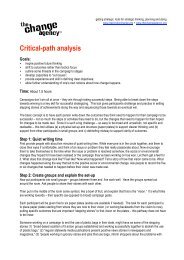

![Meaningful Student Involvement Research Guide [pdf] - SoundOut](https://img.yumpu.com/38822556/1/190x231/meaningful-student-involvement-research-guide-pdf-soundout.jpg?quality=85)